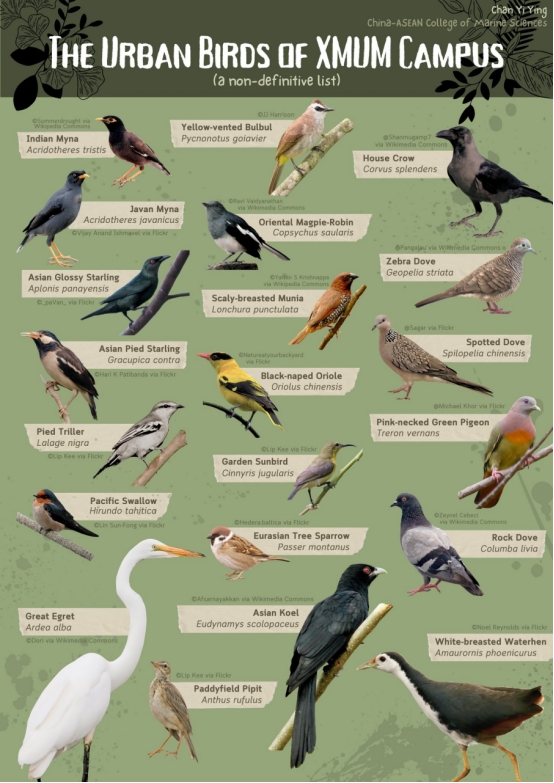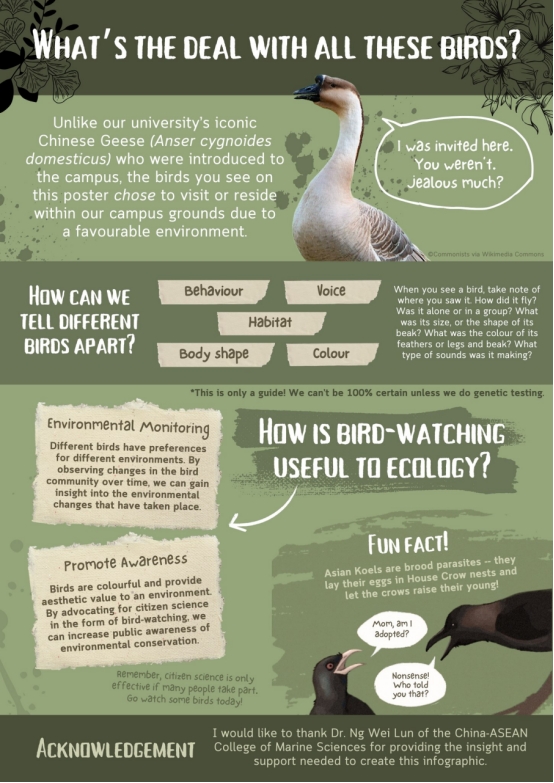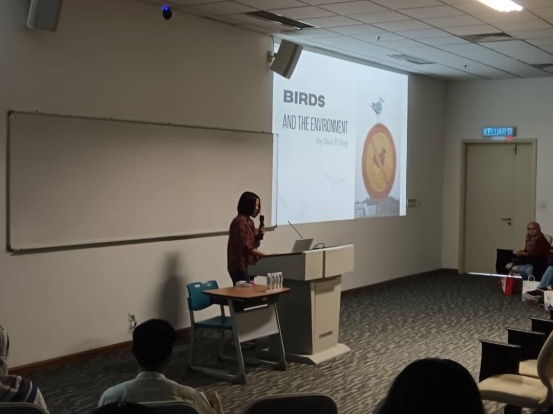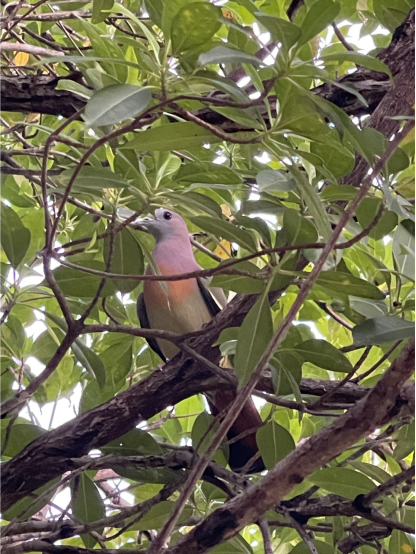XMUM Student Documents Campus Bird Life
2024-06-28Known for its lush greenery and diverse landscapes, XMUM provides a perfect habitat for many plants and animals. Chan Yi Ying, a third-year Marine Environmental Chemistry student, is an enthusiastic bird-watcher. Under the supervision of Dr. Ng Wei Lun, she recently compiled a detailed infographic of campus birds based on her observations.


Yi Ying's infographic categorizes 22 bird species by scientific classification. From the relaxed Chinese geese by Furong Lake to the occasional black-naped oriole near the hills, nearly every bird encountered on campus is represented.
"I've been fascinated by birds since watching Kung Fu Panda as a child and admiring the crane," Yi Ying said. "Whether dining in the canteen or walking on campus, I observe them and capture videos to document their presence."
Bird-watching is part of Yi Ying's daily life. She observes with her eyes and listens attentively, often stumbling upon delightful encounters with new birds.
"The pink-necked green pigeon, for example, is rare," she explained, pointing at her infographic, "Once after class in A5, I saw a green flash in the trees. It flew away as I approached." Since then, Yi Ying has spotted the pink-necked green pigeon at least five times on campus.
Near B1, she encountered two zebra doves engaged in a roadside dance. Zebra doves, smaller relatives of pigeons, enjoy walking on the ground - an aspect Yi Ying particularly enjoys.
"During the recent mating season, I saw them dancing near B1, but they flew away when a car passed," she recalled.
Understanding the personalities of birds presents Yi Ying with challenges. Bold birds like the Indian myna at B1 boldly approach people for food, while others are shy and flee at the slightest approach. However, Yi Ying has honed her bird-watching and identification skills:
She starts by recording videos with her phone to capture birds' appearances, movements, and sounds. Then, she uses online bird guides like All About Birds and Merlin Bird ID to identify birds based on size, color, habits, and sounds.
When asked for bird-watching tips for beginners, Yi Ying emphasizes the importance of video recording: "Birds often fly away at the slightest movement. Recording videos allows you to observe their colors and shapes from different angles and compare their calls on specialized websites."

Yi Ying presented at an exchange with Universiti Malaysia Terengganu students
Summarizing her approach into five words - behavior, voice, body shape, color, and habitat - Yi Ying writes on her infographic:
"Unlike our university’s iconic Chinese Geese who were introduced to the campus, the birds you see on this poster chose to visit or reside within our campus grounds due to a favourable environment."
Yi Ying speculates that birds choose XMUM for various reasons - plentiful food, nesting trees, or opportunities to find mates - making it an ideal place to settle. Regardless of the reasons, these birds add vibrancy to the campus's biodiversity.
"Birds are fragile creatures, often vulnerable to environmental pollution. By observing them, we indirectly assess environmental changes," Yi Ying said. "The more bird species in an area, the healthier the environment."
"Pay attention to your surroundings. Many feel disconnected from the environment, but wherever you are, you are always part of it," she added.
Yi Ying also notes the challenges of tracking bird distribution due to their mobility and factors such as breeding and migration seasons. She hopes more bird enthusiasts will join her project to collectively observe, record, and create a comprehensive bird-watching map of XMUM.
"This project is not just about documenting campus birds; it's about raising awareness of birds and the environment," she concluded.

A pink-necked green pigeon at XMUM campus. Photo by Li Xiaowen.






